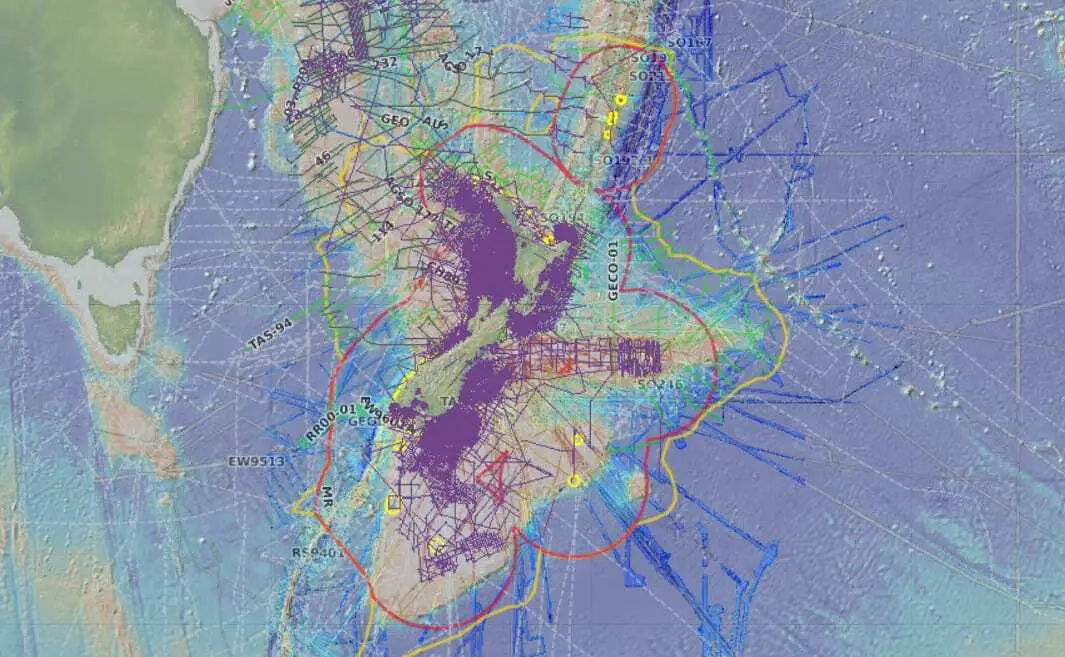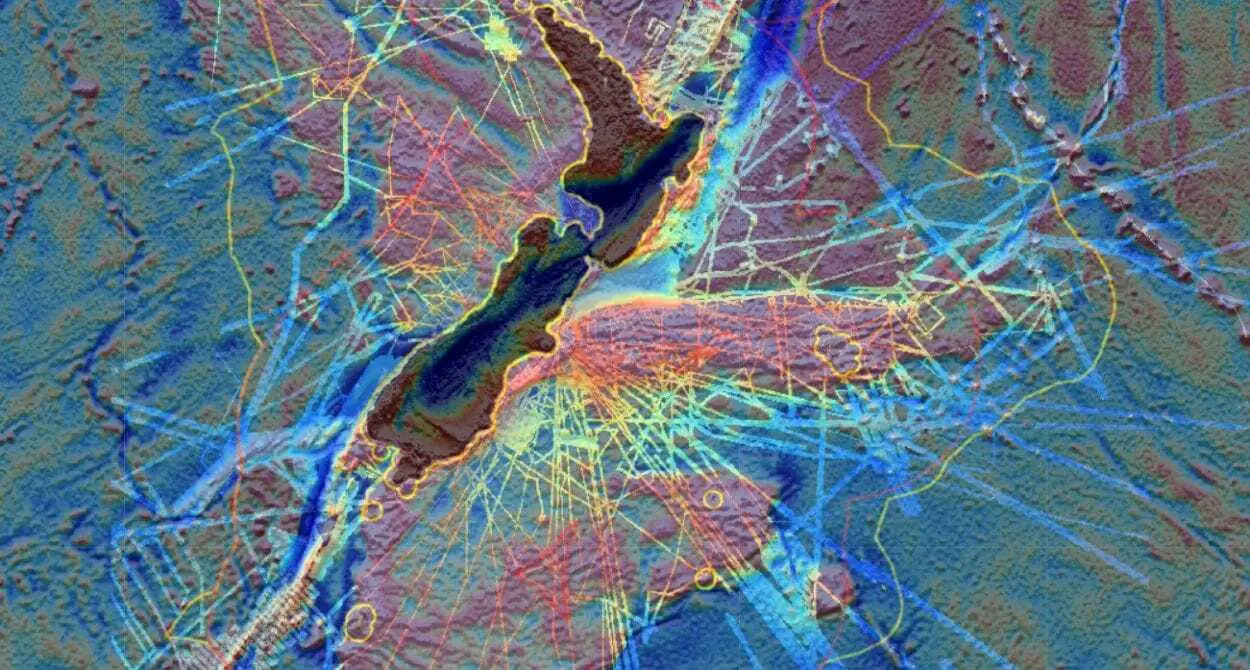A new mapping interface by the GNS Science’s Te Riu-a-Māui / Zealandia research programme (TRAMZ) reveals the geology of Aotearoa New Zealand and the lost continent of Zealandia.
The map allows users to explore the geoscience data that shows the bathymetry (shape of the ocean floor) and tectonic origins of Earth’s eighth continent.
Zealandia, also called Tasmantis is a large submerged mass of continental crust that broke away from Gondwanaland around 83–79 million years ago and became completely submerged by about 23 million years ago.
Zealandia comprises of two parallel ridges that rise above the seafloor to heights of around 1,000–1,500 m. The ridges are separated by a failed rift that overtime has become filled with a graben (a depressed block of the crust).

The continent stretches from latitude 19° south (north of tropical New Caledonia) to 56° south (south of New Zealand’s bleak subantarctic islands) and covers an area of 4,920,000 km2.
In 2017, geologists concluded that the submerged mass fulfilled the requirements to be classified as a drowned continent, rather than a microcontinent or continental fragment.
The interface consists of three multi-layered maps showing a compilation of data.
The Tectonic map reveals the geology of the continent, including the age of the crust, plate and microplate boundaries, sedimentary basins, and volcanoes. The Bathymetric map shows the shape of the seabed and depicts coastlines and identifies underwater features. The Geoscience data map plots GNS Science’s 1:250 000 onland geology and Petlab database sample locations.
Dr Nick Mortimer, lead author of the mapping interface said: “These maps are a scientific benchmark – but they’re also more than that. They’re a way of communicating our work to our colleagues, stakeholders, educators, and the public.” Mortimer added: “We’ve made these maps to provide an accurate, complete and up-to-date picture of the geology of the New Zealand and southwest Pacific area – better than we have had before.”
The mapping interface uses the GEBCO 2019 grid, the first output of the Seabed2030 project which is a global initiative to map the ocean floor of the entire world by 2030. The project is a collaboration between The Nippon Foundation in Japan and the General Bathymetric Chart of the Oceans (GEBCO). NIWA, GNS Science and Land Information New Zealand are jointly leading the South and West Pacific Ocean Regional Data Assembly and Coordination Centre, based in Wellington.





